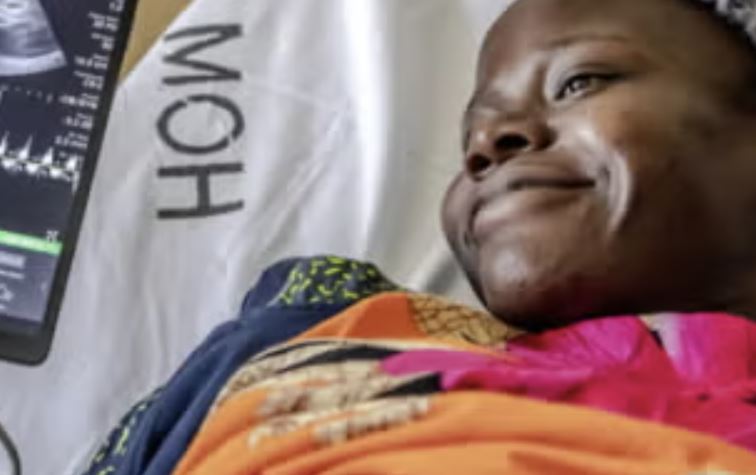At SantExpo 2025, healthcare leaders explored how digital technologies, elite sports management strategies, and structural reforms in women’s health can drive a new era of smart, inclusive, and high-performing hospitals.
May 20-22, 2025—SantExpo returns to Paris Expo Porte de Versailles as France’s leading event for health and social care professionals. Created over 60 years ago by the Fédération Hospitalière de France, the fair now brings together institutions, clinicians, startups, researchers, policymakers, and digital innovators to tackle urgent public health challenges and shape the future of care.
This year’s edition features a dedicated circuit on co-constructing smart hospitals, showcasing digital health exhibitors driving innovation and collaboration. In our coverage, we explore this technological shift alongside an unexpected parallel: how elite sports management can inspire hospital leadership. We also attended a conference on women’s health, where panelists proposed concrete actions to improve healthcare for women.
Co-building Smart Hospitals with Digital Players
The transition to smart hospitals was front and center at SantExpo 2025, both in the expert-led parcours on hospital design and in the Agora conference “Mobilizing Data for Health,” held in partnership with HIMSS Europe. As digital integration becomes foundational to healthcare, the conversation has moved from simply collecting health data to making it actionable and interoperable across systems. The panel emphasized that building a truly proactive and preventative healthcare model requires a robust flow of clean, standardized data between hospitals, municipalities, clinicians, and patients—ideally from the design phase of hospital infrastructure to long-term service delivery.
Speakers presented international case studies, notably from Denmark and France, where the implementation of national data standards and shared digital portals has transformed how hospitals and caregivers communicate. These systems allow patients to track their treatments and medications while enabling care teams to make informed decisions based on real-time, cross-institutional information.
In France, population health models are leveraging PMSI data to reduce emergency admissions and increase outpatient procedures—particularly among patients with chronic conditions like Type 2 diabetes. The panel emphasized that data quality, integration, and transparency are now prerequisites for deploying next-generation tools such as AI, predictive analytics, and digital twins in healthcare.
This vision ties directly into SantExpo’s Smart Hospital circuit, curated by the Smart Buildings Alliance, where firms like Enovacom (Orange Healthcare), Engie Solutions, DSI Group Construction, Equans Digital, and AIA Life Designers showcased solutions for embedding digital systems into the physical hospital environment.

The parcours explored the full lifecycle of a smart hospital—from architectural planning to live service optimization—using the Ready2Services 4 Care methodology. Across both sessions, a shared message emerged: co-construction with digital players, guided by strong governance and user-centric design, is essential for building high-performance, resilient hospitals equipped for the future.
Sport Management To Inspire Hospital Governance?
We’re used to hearing about healthcare staff integrating sports and physical activity, like the Moving Healthcare Professionals program in England that helps healthcare professionals promote physical activity to their patients. Now, some are turning to sports management as an inspiration to rethink hospital governance by exploring synergies between hospital management and elite-level sports teams.
In elite teams like those in rugby, success depends on each member—regardless of role—working cohesively toward a shared goal, much like in healthcare where radiologists, physicians, nurses, and technologists must align to ensure optimal patient care. Allowing healthcare teams to co-create operational norms fosters ownership, respect, and open communication, ultimately leading to more efficient workflows and stronger interpersonal trust.

This collaborative model is said to improve clinical outcomes and enhance job satisfaction, reduce burnout, and nurture a culture of mutual support and continuous improvement—key traits seen in high-performing sports teams that can transform hospital environments. This is what Coach Julie Barennes of Basket Landes discussed during her conference at SantExpo in Paris.
As coach of France’s national champion team and Europe Champion team of 2024, Barennes emphasized the importance of embracing failure as part of growth and highlighted the critical role of collective support when individual performance falters—a lesson directly applicable to hospital teams dealing with stress and burnout.
She also pointed out that workplace happiness depends not just on individual intention but also on having the right tools and communication structures, paralleling the need for supportive, communicative healthcare environments.
“Every new person who joins us does so under specific conditions… They know what they’re stepping into, they know what will be expected of them.”
This echoes the importance of clear expectations, value alignment, and cultural onboarding in hospitals—especially when integrating new staff into established clinical teams.
“When someone is new and still in training, the goal isn’t to say ‘don’t do this’… it’s to support them so they gradually learn the codes.”
This insight strongly parallels how junior medical professionals, like residents or new nurses, need guidance—not criticism—as they adapt to hospital norms, protocols, and team dynamics.
Women’s Health: Propositions to Improve Ongoing Concern about Healthcare for Women
The SantExpo panel “Women’s Health: Proposals and Actions to Meet the Challenge” highlighted ongoing disparities in women’s healthcare, particularly in diagnosis and access. Conditions like cardiovascular disease and endometriosis are often overlooked or misdiagnosed, due to outdated clinical assumptions and limited practitioner training. Tools such as pelvic MRI and transvaginal ultrasound were cited as essential but underutilized diagnostic methods.
Speakers stressed the influence of social determinants—such as income, geography, and migration status—on access to care. To address this, they called for reforms including better access to reproductive services, integration of mental health care, and the deployment of mobile health units. The lack of female representation in clinical research also drew criticism, with proposals for sex-disaggregated data, updated medical training, and dedicated women’s health centers.


Some international initiatives already reflect these goals. NYU Langone’s $60M Mignone Women’s Health Collaborative, launched in May 2025, integrates 20 specialties under one roof in New York. Similarly, the WomenX Collective by UNFPA and Charité in Germany, launched in 2024, targets reproductive health challenges in low- and middle-income countries through cross-sector collaboration.
Panelists:
- Maud Nivet, National delegate – Collective Femmes de Santé
- Maria Melchior, Research Director, Epidemiologist – INSERM, I21
- Dr. Leila Chaouachi, Pharmacist, Founder of CRAFS – Hôpital Fernand Widal
- Isabelle Thomassin-Naggara, Head of Radiology and Specialized Interventional Imaging Department (IRIS) – AP-HP Sorbonne Université, Hôpital Tenon











